Special Rice

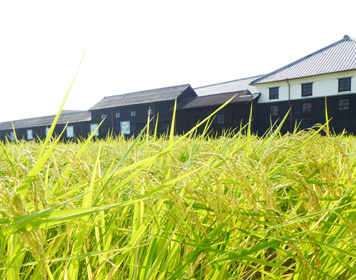
Acquisition of good raw material (rice) is important to make good sake. Therefore, we have a strong tendency to use Saga rice. Especially as for Yamada-nishiki, we set up a research institute for rice cultivation in 1988. Since then, we have begun to study Yamada-nishiki and engaged in the production of the rice in cooperation with local farmers. Also, we have strong interest in polishing rice, so we use cooling heat rice polisher to do it best.
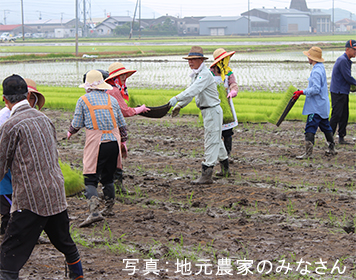
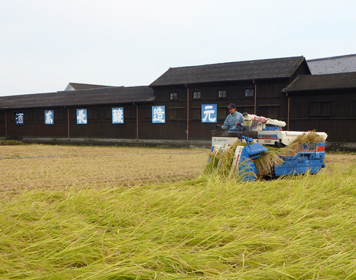
Yamada-nishiki Research Institute
-
In 1988
Local farmers, Gochoda sake brewery and Seto sake brewery joined together to grow Yamada-nishiki rice on a trial basis, but most of the rice plants fell down before being harvested. It was due to the tall plants which are the characteristics of Yamada-nishiki. We learned how difficult to raise the rice.
-
In 1989
We founded Yamada-nishiki Cultivation Research Institute to make a full-scall Yamada-nishiki cultivation kick off. The original members ware 20 and the planted areas were 282 acres.
-
In 1990
We changed the way to grow rice seedlings into a put seedling raising method to improve the quality of Yamada-nishiki. Members increased up to 27 and the planted area increased to 512 acres.
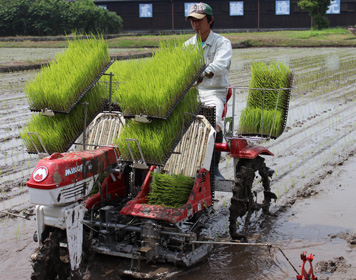
-
From 1991 to This day
Every year from around the end of May to late June, company staff from Gochoda Sake Brewery, Seto Sake Brewery and The Research Institute staff begin to plant rice seeds and seeding paddies Toward September, we took a tour of inspection to same acres where Yamada-nishiki was produced in order to exchange information and to work on technical improvement.
Recently, we can produce high-quality Yamada-nishiki steadily due to the effort, cooperation by local experienced farmers and the pot seedlings raising method in the face of bad condition of intense heat and heavy rain. Now, supporting members are 25 and the planted area has increased to 1800 acres.
Plant 2 or 3 rice seeds in small hollows of pot seedling box. After seedlings are fully rooted, Rice seedlings are planted in paddies by the rice planting machine. Unlike the usual rice seedling method, strong roots grow. Therefore, this pot method is suitable for Yamada-nishiki which is tall and easy to lodge.
Also, when pot seedlings are transplanted into paddy fields, by widening the width of each seedlings to get much sunshine and air, excellent rice can grow up. As a result, most of the harvested rice have the same seizes of good quality.

According to Yamada-nishiki Cultivation Research Institute, seeding and rice-transplanting are mainly carried out by Gochoda Sake Brewery and Seto Sake Brewery, and also the Research Institute staff are in charge of puddling or land preparation, water control and rice harvest. Also, there are first of all company ride fields about 10 acres around the site, where our company staff, plowing the fields, puddling by tractor and transplanting rice.
For Yamada-nishiki, water management of the rice field is very important because it affects the height of the rice seedlings. When there is too much quantity of water in rice fields, the seedlings grow higher, and the risk of the lodging increases. Conversely, the adjustment of dedicate water management is necessary because rice plants weaken when there is too little quantity of water. At this time, the staff patrols all rice fields every day and watch over the growth of the rice. After that, they prepare for the day of rice harvesting while fighting against weeds growing steadily. Finally they get on a combine harvester, having the best time to feel the joy of the crop of Yamada-nishiki which they spent much time and effort continuing to watch over.
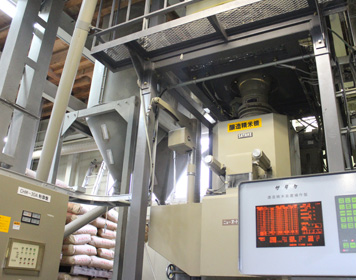
All our sake rice is produced in Saga. In order to make the most of the rice to brew sake, we carefully polish rice with cooling heat rice polisher while keeping lasting water of rice. Usually, due to the rice polishing, rice becomes very hot and water evaporates. Then, rice breaking inevitably occurs in the process of polishing. However, this excellent rice polisher makes it possible to prevent the rice breaking and reduce an invalid rice cleaning rate.





